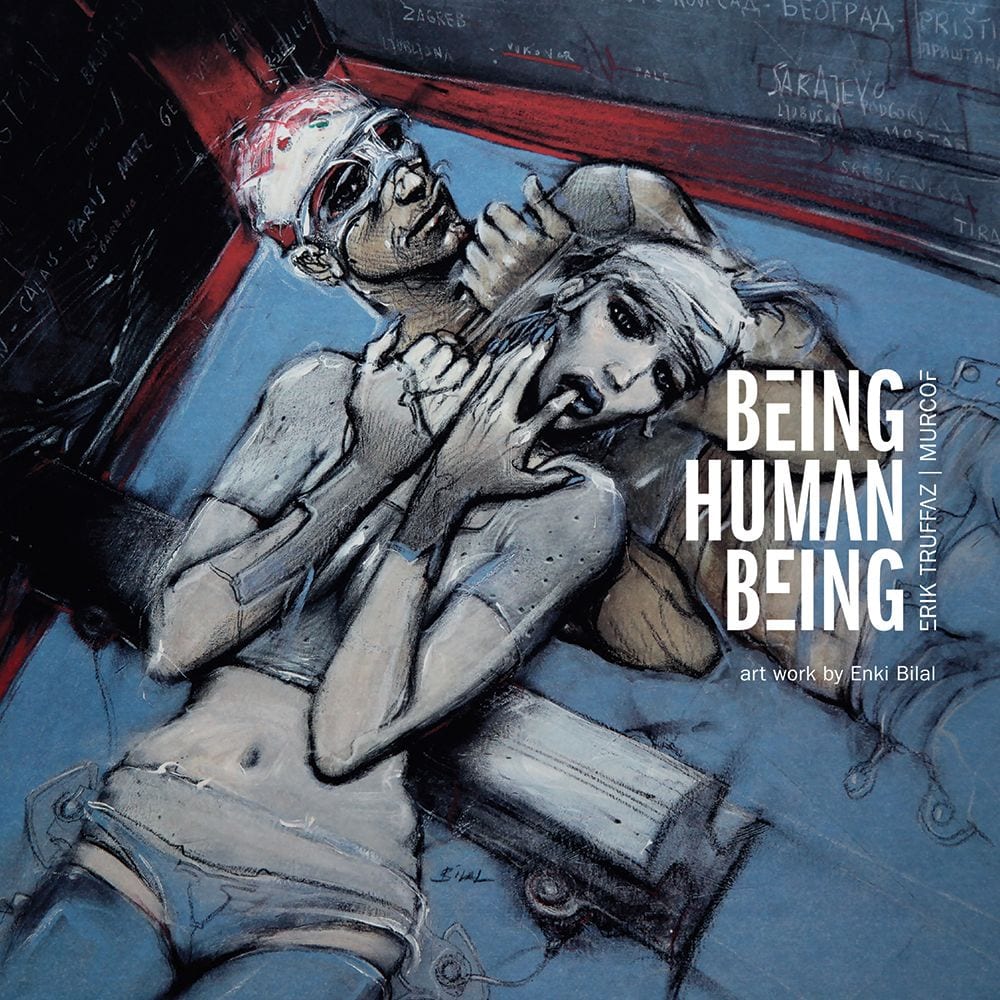
It’s difficult to tear your eyes away from the art of Enki Bilal. The gaunt, grey faces that define his subjects, from the comic book characters of his Nikopol trilogy to the portraits commissioned for the Louvre in 2012, not only return but seem to actively transfix the viewer’s gaze. They are faces that ‘haunt’ in the proper sense of the word. Faces that convey the traumas of modern history and globalisation.
It is an aesthetics of hauntology that shares some ground with the elegiac tones that colour the work of trumpeter Erik Truffaz and the minimalist electronic experimentation of “sound-painter” Murcof. That these three men would end up working together, then, is not so much of a surprise as it might seem at first glance (in fact, Murcof and Truffaz have previously put out music together in 2008).
Being Human Being is the product of a three-way collaborative relationship that dates back to 2012, when Truffaz and Murcof started hanging out in Bilal’s studio and composing music in response to his art. If the idea of transgressing the typical barriers between audio and visual mediums sounds ambitious, then the resultant album is similarly encompassing in its scope. From the ballsy move of invoking the ‘Origin of the World’ in the title of the opening track to the sheer expansiveness of some of the tracks, it is a record that is unconcerned with the usual boundaries nor shies away from grand statements.
The desolate, almost biblical, wind-swept soundscape of the aforementioned opener is followed by the fifteen-minute, psychedelic-tinged, electronic wig-out of ‘Warhol’. Surely ironically titled, since this is as far from Andy Warhol’s idea of ‘pop art’ in any sense of the word, the track’s warbling keys, jazzy drums and elegiac trumpet operate in a liminal space between doom and euphoria, between melody and atonality. It’s a huge, epic, sprawling track – in many senses the album’s central statement. As such, it is a little strange arriving so early on in the album’s running, but then again this is a record in which nothing can be taken as given.
Skittering clicks and spiralling notes define the mid-album track (in terms of running time) ‘Chaos’, seguing gracefully into ‘And Nina’, where Truffaz’s elegiac trumpet belches out a paranoid loop above urgent piano keys and a slowly emerging 4/4 beat. A few tracks later, on ‘Human Being’, the trio play with more dance-music motifs, juxtaposing a muffled bassline and 4/4 kicks with cinematic keys and understated horns. Contrastingly, the beatless penultimate track ‘Skin’ works as a further muddying of electronics and jazz horns, offering the album’s gentlest moment.
That the warm and immersive ‘Skin’ is followed by the unsettling noise of album closer ‘Infinite Abstract’ signals the intent behind the record. If the album opened with a desolate soundscape that signified the earth’s origins, then the difficult finale soundtracks the world’s destruction and the emergence of a space where this is no longer human music.
The psychoanalyst Sigmund Freud described how the act of mourning, as opposed to that of melancholia, was a healthy way of “working through” loss. It is in this sense that Being Human Being finds its vitality and urgency. Like Bilal’s paintings and drawings, the elegiac and mournful overtones of this record finds its influence and informants in the unsettling aspects of our own historical moment. And like Bilal’s art, it shapes these influences into something that speaks back to them, making for a very human response that is almost impossible not to connect with.
Being Human Being is out now, order a copy from Two Gentlemen web-store.
> PLAY ‘BEING HUMAN’ TRAILER ON YOUTUBE
Discover more about Eric Truffaz, Murcof and Mundo Recordings on Inverted Audio.